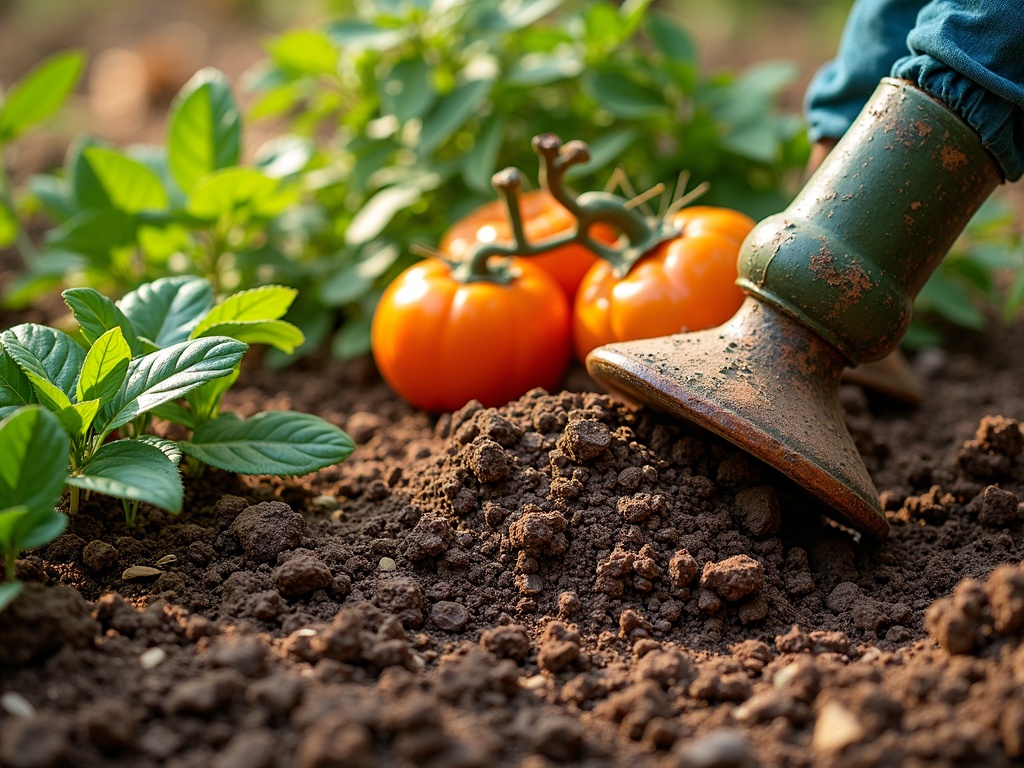Okay, I understand. Here’s the long-form HTML article you requested, based on the provided specifications:
What is Mulch and Why Should You Use It? A Gardener’s Essential Guide
Imagine your garden: vibrant colors, thriving plants, and rich soil teeming with life. But beneath the surface, a silent battle rages against weeds, erosion, and moisture loss. The secret weapon in a successful gardener’s arsenal? Mulch. More than just decorative ground cover, mulch is a powerhouse of benefits for your plants and soil. Let’s dig in and explore what mulch is, the various types available, and why you should absolutely be using it in your garden.
What Exactly IS Mulch?
At its simplest, mulch is any material spread on the surface of the soil. Think of it as a blanket for your garden. It’s designed to protect the soil, retain moisture, suppress weeds, and improve soil health as it decomposes. While often associated with landscaping and flowerbeds, mulching has applications in vegetable gardens, around trees, and even in container gardening. It’s a versatile tool for any gardener, novice or experienced.
The Two Main Categories: Organic vs. Inorganic
Mulches are broadly categorized into two main types: organic and inorganic. The key difference lies in their composition and how they benefit the soil over time.
- Organic Mulches: These mulches are derived from once-living materials. As they decompose, they enrich the soil with nutrients, improve soil structure, and foster beneficial microbial activity. Examples include wood chips, shredded bark, straw, compost, and fallen leaves.
- Inorganic Mulches: These are synthetic or mineral-based materials. They don’t decompose and therefore don’t add nutrients to the soil. Their primary benefits are weed suppression, moisture retention, and temperature regulation. Examples include gravel, crushed stone, landscape fabric, and rubber mulch.
Why Use Mulch? The Multifaceted Benefits
So, why all the fuss about mulch? Here’s a detailed look at the numerous advantages it offers:
Weed Suppression: A Gardener’s Best Friend
Weeds compete with your plants for essential resources like sunlight, water, and nutrients. Mulch acts as a physical barrier, preventing weed seeds from germinating and blocking sunlight from reaching existing weeds. A thick layer of mulch can significantly reduce the need for herbicides and hand-weeding, saving you time and effort.
Moisture Retention: Saving Water and Protecting Plants
Mulch reduces water evaporation from the soil surface, helping to keep the soil consistently moist. This is especially crucial during hot, dry periods. By retaining moisture, mulch reduces the frequency of watering, conserving water and saving you money on your water bill. Consistent moisture also prevents plants from drying out and suffering from heat stress.
Temperature Regulation: A Consistent Soil Environment
Mulch acts as an insulator, moderating soil temperature fluctuations. In the summer, it keeps the soil cooler by reflecting sunlight. In the winter, it helps to insulate the soil and protect plant roots from freezing temperatures. This consistent soil temperature promotes healthy root growth and reduces plant stress.
Soil Improvement: Nourishing the Foundation
Organic mulches decompose over time, adding valuable organic matter to the soil. This improves soil structure, drainage, and aeration. Organic matter also provides essential nutrients for plant growth, reducing the need for synthetic fertilizers. As worms and other beneficial organisms break down the mulch, they further enrich the soil and create a healthy ecosystem for your plants.
Erosion Control: Protecting Precious Topsoil
Rain and wind can erode topsoil, carrying away valuable nutrients and damaging plant roots. Mulch acts as a protective layer, preventing soil erosion and keeping your garden healthy and intact. This is particularly important on slopes and in areas with heavy rainfall or strong winds.
Aesthetic Appeal: Enhancing Garden Beauty
Beyond its practical benefits, mulch can also enhance the aesthetic appeal of your garden. A layer of mulch provides a uniform, clean look, making your plants stand out and creating a visually pleasing landscape. Different types of mulch offer different colors and textures, allowing you to customize the look of your garden.
Choosing the Right Mulch: A Comprehensive Guide
With so many types of mulch available, selecting the right one can feel overwhelming. Here’s a breakdown of popular mulch options, along with their pros and cons:
Organic Mulch Options
- Wood Chips: A readily available and affordable option, wood chips decompose slowly, providing long-lasting weed suppression and moisture retention. They are best suited for pathways, shrub beds, and around trees. Be sure to avoid using pressure-treated wood chips, as they can leach harmful chemicals into the soil.
- Shredded Bark: Similar to wood chips, shredded bark is attractive and long-lasting. It’s a good choice for ornamental gardens and flowerbeds. However, it can sometimes become compacted over time, reducing its effectiveness.
- Straw: An excellent choice for vegetable gardens, straw is lightweight, readily available, and decomposes relatively quickly, adding nutrients to the soil. Avoid using hay, as it often contains weed seeds.
- Compost: A nutrient-rich option, compost improves soil structure and provides essential nutrients for plant growth. It’s best used as a thin layer around plants in vegetable gardens and flowerbeds.
- Fallen Leaves: A free and readily available option, fallen leaves are a great way to recycle garden waste and improve soil health. Shred leaves before using them as mulch to prevent them from matting together and blocking air and water from reaching the soil.
- Pine Needles: An excellent choice for acid-loving plants like azaleas, rhododendrons, and blueberries, pine needles decompose slowly and help to acidify the soil.

Inorganic Mulch Options
- Gravel and Crushed Stone: These are long-lasting options that provide excellent drainage and weed suppression. They are best suited for pathways, rock gardens, and around plants that prefer dry conditions. However, they don’t add nutrients to the soil and can make it difficult to amend the soil later.
- Landscape Fabric: A synthetic material that prevents weed growth while allowing water and air to penetrate the soil. It’s often used under gravel or mulch to provide an extra layer of weed protection. However, it can degrade over time and become clogged with soil, reducing its effectiveness.
- Rubber Mulch: Made from recycled tires, rubber mulch is durable, long-lasting, and provides excellent weed suppression. However, it doesn’t add nutrients to the soil and can release harmful chemicals into the environment. It also heats up quickly in the sun, which can damage plant roots.
How to Apply Mulch: A Step-by-Step Guide
Applying mulch properly is crucial to maximizing its benefits. Here’s a step-by-step guide:
- Prepare the Area: Remove any existing weeds and debris from the area to be mulched.
- Water the Soil: Water the soil thoroughly before applying mulch.
- Apply the Mulch: Spread a layer of mulch 2-4 inches thick around plants. Be sure to leave a few inches of space around the base of plant stems and tree trunks to prevent rot.
- Water Again: Water the mulch lightly after application to help it settle.
- Maintain the Mulch: Replenish the mulch as needed to maintain a consistent layer. Organic mulches will decompose over time and need to be replaced more frequently than inorganic mulches.
Common Mulching Mistakes to Avoid
While mulching is a relatively simple task, there are a few common mistakes to avoid:
- Volcano Mulching: Piling mulch high against the trunk of a tree can create a moist environment that promotes rot and attracts pests. Be sure to leave a few inches of space between the mulch and the trunk.
- Applying Too Much Mulch: A thick layer of mulch can suffocate plant roots and prevent air and water from reaching the soil. Stick to a layer of 2-4 inches.
- Using the Wrong Type of Mulch: Consider the needs of your plants and the characteristics of your soil when choosing a mulch. Acid-loving plants will benefit from pine needles, while vegetable gardens will thrive with compost or straw.
Conclusion: Embrace the Power of Mulch
Mulch is more than just a garden aesthetic; it’s a fundamental tool for any gardener looking to create a thriving, healthy landscape. From suppressing weeds and retaining moisture to improving soil health and regulating temperature, the benefits of mulch are undeniable. By understanding the different types of mulch available and applying it correctly, you can unlock the full potential of your garden and enjoy a beautiful, bountiful harvest. So, grab a shovel, choose your mulch, and get ready to transform your garden into a thriving paradise.
